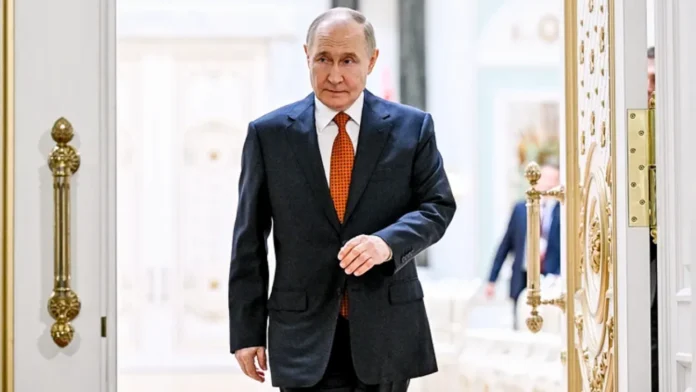The EAEU summit was over, but Vladimir Putin’s day wasn’t. Facing reporters, he was grilled on the issues defining Russia today.
The war was front and center: military spending, the tense standoff with NATO, and the stalled talks with Ukraine. But he also had to project stability, giving his take on the country’s overall economic health.
Military Spending and NATO
Putin began by responding to NATO’s recent decision to raise defense spending to 5 percent of GDP. He confirmed that Russia currently allocates 6.3 percent of its GDP to military needs, roughly 13.5 trillion rubles.
He called the amount significant but added that the country was managing its economic balance.
“We are paying for it with inflation,” he admitted, “but we are working toward a soft landing for the economy.”
Putin drew comparisons to U.S. military expenditures during past wars, noting that Washington spent up to 14 percent of its budget during the Korean War and 10 percent during Vietnam.
He argued that Russia’s spending stays within its own economy, while NATO members are primarily purchasing weapons from the United States.
Russia, he added, intends to reduce military expenditures over the next three years, while European nations appear to be moving in the opposite direction.
“Who’s preparing for aggression—us or them?” he asked.
Messaging to the West
Putin criticized what he described as a contradiction in Western narratives.
“They say our economy is collapsing, but at the same time, claim we’re about to attack NATO,” he said. “It doesn’t add up. They don’t believe it themselves, but they need public support for higher defense budgets.”
He also accused Western governments of using fear to justify cuts in social spending and to pressure citizens into accepting greater economic burdens.
Inflation and Economic Performance
On the domestic front, Putin said wages in Russia and EAEU countries had increased, reporting a 9.7 percent rise in 2024 and an additional 4 percent so far this year.
He rejected claims that sanctions would cripple the Russian economy.
“Our growth last year was 4.3 percent,” he said. “In the eurozone, it was 0.9.”
Addressing reports of a $45 oil price cap under proposed sanctions, he said Russia would not comply.
“We won’t sell at that price. Let them buy elsewhere and pay more,” he said.
Ukraine Negotiations
Yes, peace talks with Ukraine are still on, Putin confirmed, but he was blunt that the two sides remain deeply divided.
He said they’ve swapped initial proposals that are, predictably, on opposite ends of the spectrum. But that, he argued, is precisely what negotiations are for. As for concrete evidence of progress, Putin pointed directly to a recent prisoner exchange, calling it an important humanitarian breakthrough.
He claimed Russia had already returned over 6,000 bodies of Ukrainian soldiers and was prepared to return another 3,000, waiting for Kyiv to respond.
“There’s a political cost to acknowledging that many casualties,” he said, implying hesitation on the Ukrainian side.
The next phase of talks will likely happen in Istanbul, but when that will be is still up in the air.
“We’re ready,” Putin said, and added that both sides are still talking regularly.
U.S. Relations and Trump
Commenting on former U.S. President Donald Trump, Putin said he respected Trump’s approach and believed in the value of direct talks.
“Trump recently said the Ukraine crisis was harder to resolve than he thought. He’s right. It’s one thing to observe, another to be involved,” he said.
Putin says he’s up for a meeting with Trump—if it’s properly planned and leads to something meaningful.
He noted that recent moves by the White House had helped stabilize U.S.–Russia relations.
EAEU Growth and Economic Integration
Summing up the summit itself, Putin expressed satisfaction with the EAEU’s growth, citing a 4 percent regional average, compared to a global average of 3.3 percent.
He credited that growth—with some members nearing 6 percent—directly to his strategy of removing trade barriers.
In the end, the press conference wasn’t about new policy; it was a carefully crafted performance. From military budgets to diplomatic signals, every remark was designed to project an image of internal strength and global defiance.
The true test, however, is whether this powerful messaging can actually shift the global strategic calculus.

